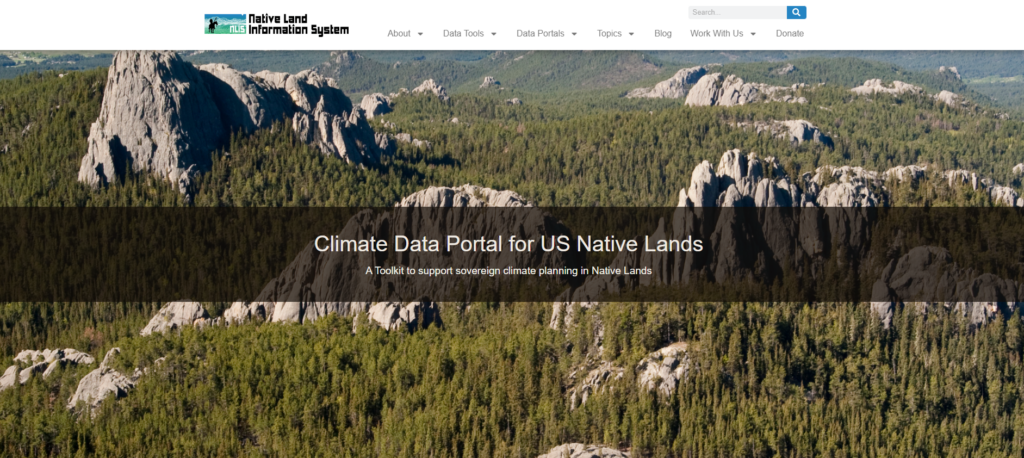Water is Life: Native Efforts to Restore Water Systems

Native American efforts to protect our water systems are integral to the restoration and preservation of this non-human relative.
These Water-Focused Data Tools Support Tribal Land & Climate Planning

The Native Land Information System (NLIS) is home to over 120 public, free data tools and resources that were created to support tribal communities in developing climate-smart land management strategies. We are excited to share some of our new water data tools with you, as well as reintroduce you to some of our earlier water-related […]
Federally-funded Projects in Indian Country

About this Dashboard This data dashboard summarizes data about federally-funded projects within tribal boundaries from the Bipartisan Infrastructure Law and the Infrastructure Reduction Act. The visualization displays funds amounts and categories of federal project for all tribes for years 2022 through 2025 (it has not been modified for eventual funding freezes resulting from the current […]
Empowering Tribal Climate Adaptation Through Data

Learn more about the first-of-its-kind Climate Data Portal for US Native Lands—designed to strategically support tribal climate planning.
Key Findings from NLAP’s Literature Review of Tribal Climate Adaptation Plans

What climate concerns do tribes across the United States share? How do these climate concerns vary by region? Our Tribal Climate Literature Review identifies preliminary answers to these questions and provides insights to empower tribal climate planning.
Introducing the Climate Data Portal for U.S. Native Lands

The Native Lands Advocacy Project (NLAP) is thrilled to announce the launch of our Climate Data Portal for U.S. Native Lands! Developed with funding from the Native American Agriculture Fund, this portal is the result of our dedicated GIS team’s efforts to create & consolidate relevant climate-related data tools into one living resource. NLAP acknowledges […]
Average Wind Speed on US Native Lands

About this Dashboard This interactive dashboard provides a comprehensive analysis of average wind speed patterns across tribal lands in North America, using data from the NCEP/NCAR Reanalysis dataset. The dashboard allows users to explore wind speed trends by selecting specific Native land areas and years, or by viewing aggregated data across all regions and years. […]
Climate Data Portal for US Native Lands

Climate Data Portal for US Native Lands A toolkit to support sovereign climate planning on Native Lands This Climate Data Portal is thoughtfully designed to align with the non-linear, holistic approach tribes take when addressing climate adaptation. Drawing inspiration from the teachings of indigenous world views, which emphasize that the five basic needs of life—food, fire, […]
Introducing Our New Storymap: Good Fire: Mitigating Wildfire Risk & Healing Native Lands

The Native Lands Advocacy Project is happy to announce our newest storymap: Good Fire: Mitigating Wildfire Risk & Healing Native Lands!
Good Fire: Mitigating Wildfire Risk & Healing Native Lands

After a long history of fire suppression in the United States, Native communities are reintroducing good fire to their lands.
New Data Tools for Fire Stewardship on Native Lands

The Native Lands Advocacy Project (NLAP) is excited to highlight three data tools related to fire on U.S. Native lands. These three tools (our Thermal Activity Map, Environmental Risks Dashboard, and Extent of Fires on US Native Lands Dashboard) can help users understand the factors contributing to wildfires and their impact on Native Nations. These […]
Precipitation Projections and Winter Trends on US Native Lands

About this Dashboard This data dashboard summarizes data from future precipitation predictions and historical changes in the snow-to-precipitation ratio on Tribal lands in the contiguous United States. The precipitation predictions are based on datasets from the CRU TS (v. 4.06) and UKCP18 global RCP2.6 scenarios, while the snow-to-precipitation ratio data comes from 177 weather stations […]

